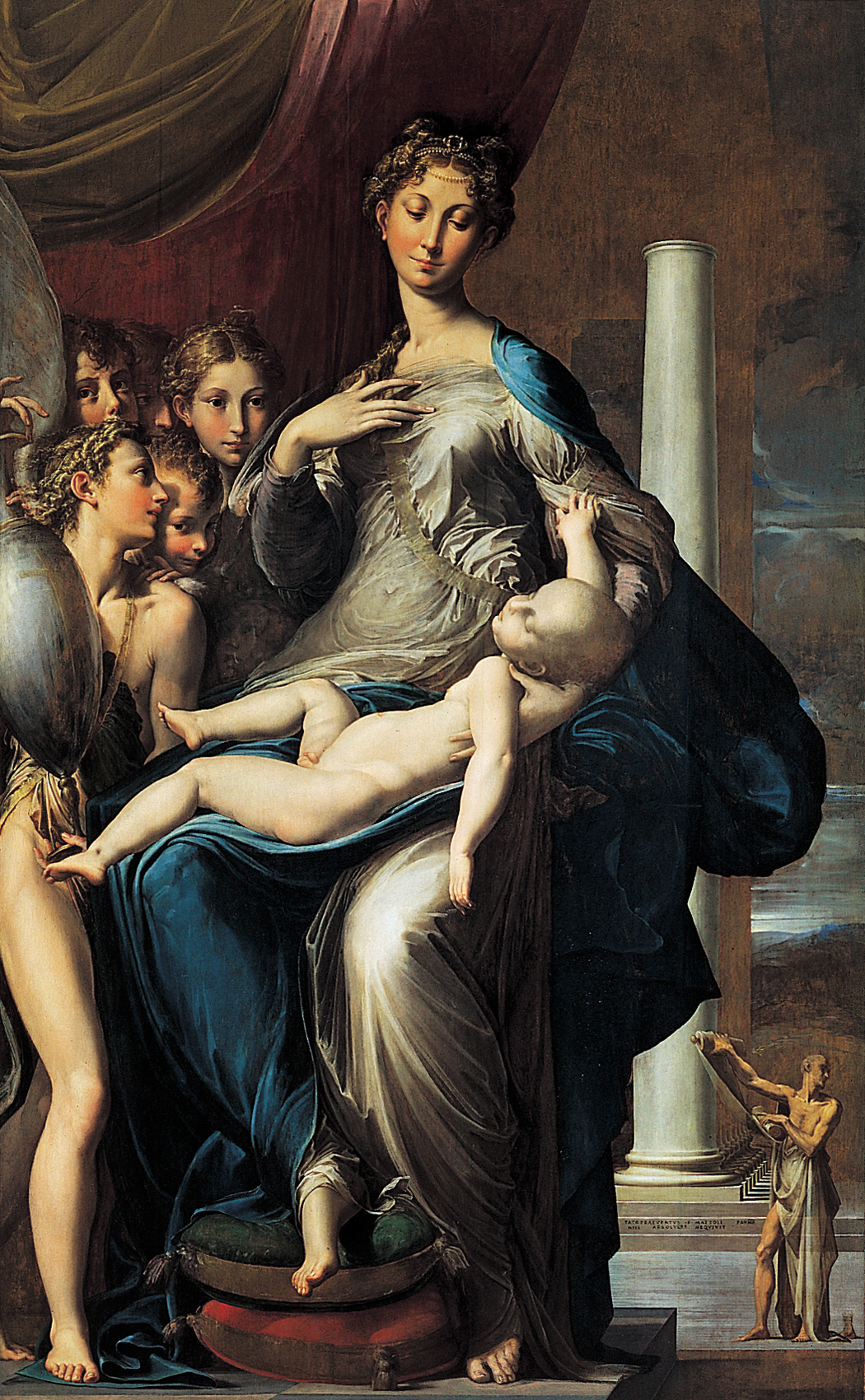It’s not that the Italian artist Girolamo Francesco Maria Mazzola, a.k.a. Parmigianino, was horribly confused and thought that the baby Jesus suffered from a rare disease that made him the size of a four-year-old child when he was only an infant. Parmigianino was exercising his artistic authority when he painted that huge baby. He was showing that he knew all of the rules of proportion by breaking them.
Parmigianino was part of an art movement called Mannerism, a relatively short-lived and small art movement that originated in Rome in the early sixteenth century. Inspired by Michelangelo’s ingenuity, these artists were interested demonstrating their inventiveness by making unusual works of art that ultimately were more about art itself than the subjects they portrayed.
In this painting of the Madonna and Child, all of the details and references within the painting are about the enterprise of creating art rather than anything religious. Mary’s body that has a very long neck swells at the hips and tapers at her head and feet just like the vase that the figure to her right holds. In fact, the reason the vase is there is so that a viewer can compare it to the form of her body.
And for some reason, we can see shape of the Virgin’s navel through her heavy garment. Mannerist artists were always doing that.
In the background the painting is unfinished, but enough is there for us to see that either the figure that holds a scroll is very small or the columns are very large.
Recommended Reading

